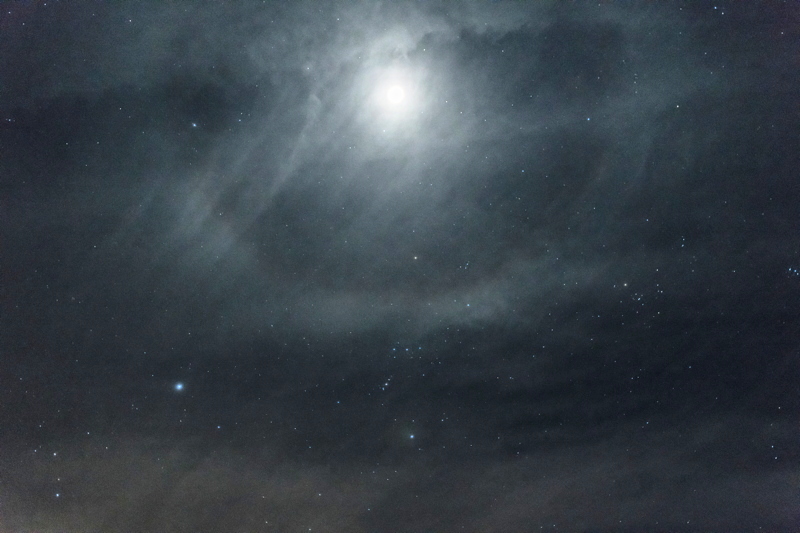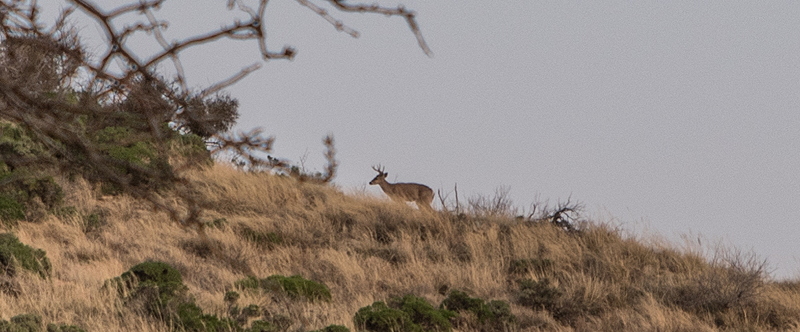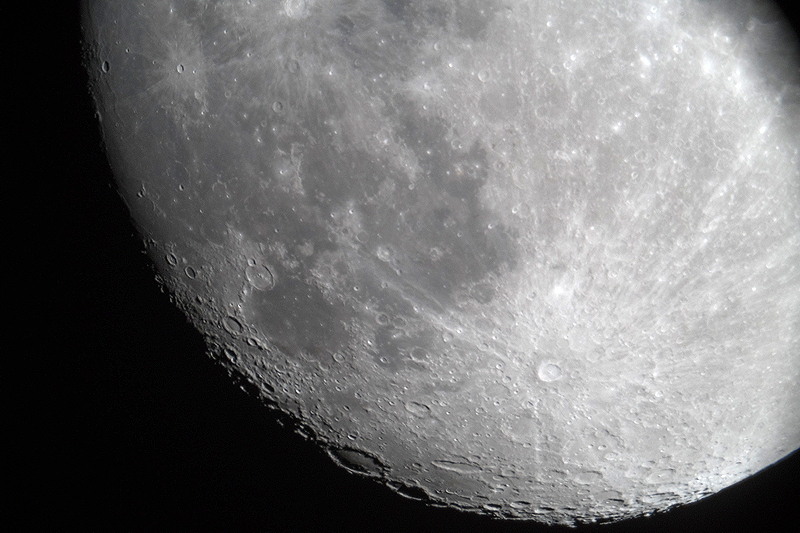Some Events; Deer; Gibbous Moon,
Venus-Uranus Conjunction
Posted: 29 March 2018
Tuesday, 20 March 2018, dawned clear, but the forecast for that night was cloudy. And unfortunately, the forecast was correct. The sky finally cleared Friday morning, 23 March, but the forecast was still for cloudy skies, and the clouds began arriving mid-day. Saturday, 24 March, was mostly cloudy and windy. That evening I attended the "Under Ancient Skies: The Archaeo-astronomy of the Desert Southwest" talk at Oracle State Park, our local IDA "International Dark Sky Park". A star party was held after the talk under some clouds:

Sunday afternoon, 25 March, I attended a concert at the Oracle Piano Society. For the final piece, world famous astrophotographer Adam Block returned to Oracle to provide visuals to accompany the performance of "Space Carnival for piano four hands", composed by George Oakley in commemoration of the Total Solar Eclipse 21 August 2017, and performed by Inga Kashakashvili and Dr. Stephen Cook.


Monday, 26 March, was cloudy with some unforecast light rain that night (0.03"). Tuesday, 27 March, the sky dawned clear, then clouds returned mid-day, and clearing again as sunset approached. I did not open the observatory that night as I would be attending an Arizona State Parks & Trails volunteer event on Wednesday. The sky was clear on Wednesday, 28 March.
While at the Arizona State Parks & Trails volunteer event, which was held at Kartchner Caverns State Park, I got to see the Gold Medal Award that was presented to Arizona State Parks & Trails in 2017. Oracle State Park's "International Dark Sky Park" designation in 2014 was specifically cited in the nomination materials for the award. Kartchner Caverns State Park was designated as a "International Dark Sky Park" in 2017.


From the Park the Dragoon Mountains looked lovely:

Click or tap on image for larger version
|
Open: Wednesday, 28 March 2018, 1826 MST Temperature: 76°F |
Session: 1214 Conditions: Clear, breezy |
Equipment Used:
12" f/8 LX600 w/StarLock
2" 24mm UWA eyepiece
Focal Reducer
2X PowerMate
Camera:
D850 DSLR
I SYNCed the observatory clock to WWV.
1835 MST: LX600 ON, StarLock OFF, High Precision OFF.
Viewed the waxing gibbous Moon, 102X.
I then saw a deer off in the distance on the side of the hill to the southeast. I did not have a long telephoto lens with me, so these photos have been significantly cropped. They were taken with the Nikon D850 DSLR with Tamron 24-70mm lens at a focal length of 70mm.



1854 MST: began preparing for imaging with the 12" telescope. Mounted the D850 DSLR at prime focus + focal reducer. This is a full-frame image of the Moon, 1/500sec, ISO 100:

Removed the focal reducer and added a 2X PowerMate for these full-frame 1/500sec, ISO 800, images of the northern and southern regions of the Moon:


1919 MST: slewed the telescope to the planet Venus. The planet Uranus was in a close conjunction with Venus, only 4' away.
I then viewed Venus with the 12x50 binoculars. Uranus was visible close to Venus.
1929 MST: began imaging the planets at prime focus + 2X PowerMate. This is a full-frame image, 1/100sec, ISO 6400, with Venus (slightly overexposed) left of center and Uranus right of center:

1942 MST: removed the camera. Viewed Venus and Uranus, 102X, both nicely in the same field-of-view. The disk of Uranus was visible.
1951 MST: LX600 OFF.
|
Close: Wednesday, 28 March 2018, 2000 MST Temperature: 59°F |
Session Length: 1h 34m Conditions: Clear |
Comments are welcome using Email. Twitter users can use the button below to tweet this report to their followers. Thanks.
Cassiopeia Observatory Home Page
Copyright ©2018 Michael L. Weasner / mweasner@me.com
URL = http://www.weasner.com/co/Reports/2018/03/29/index.html
